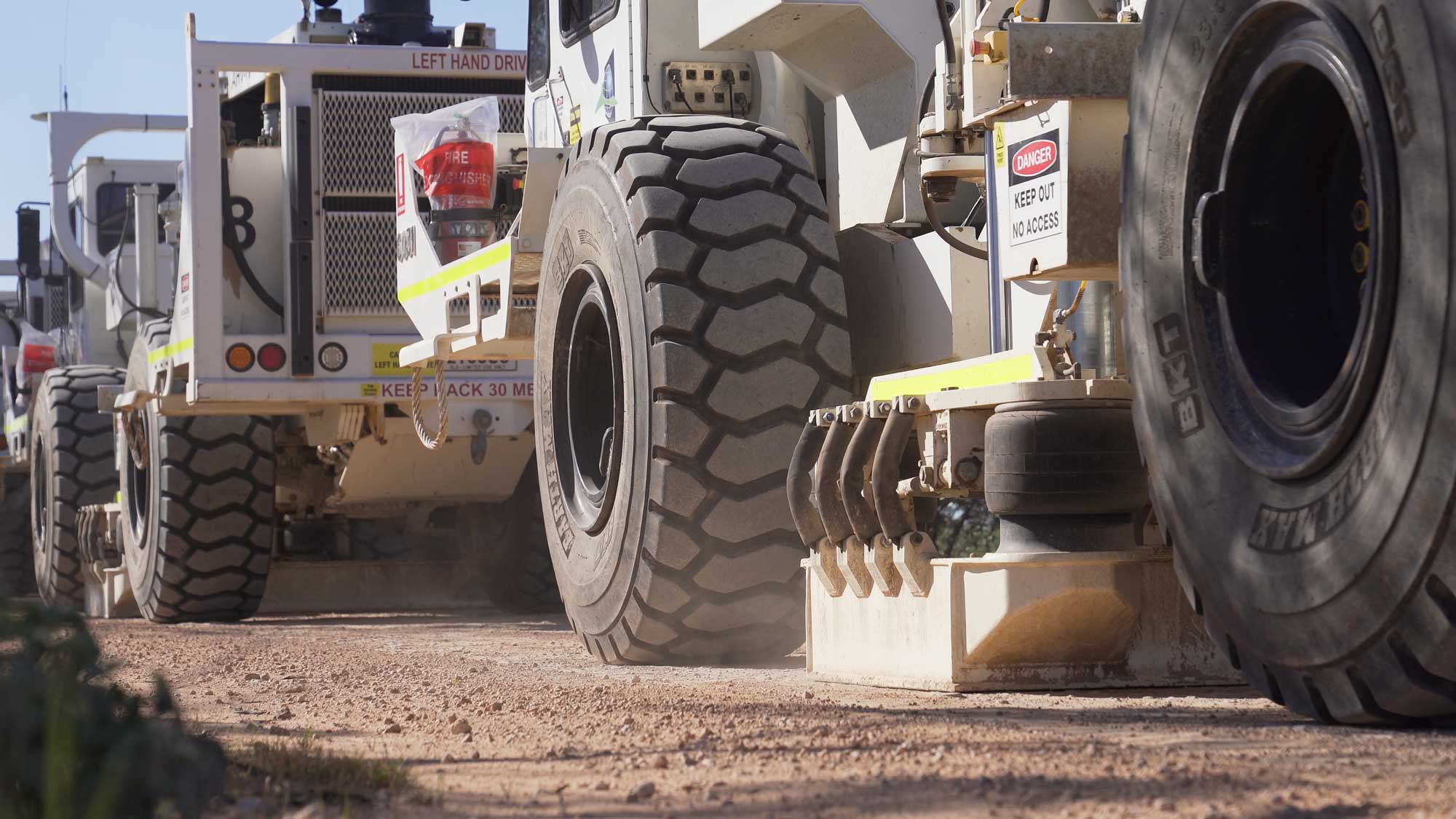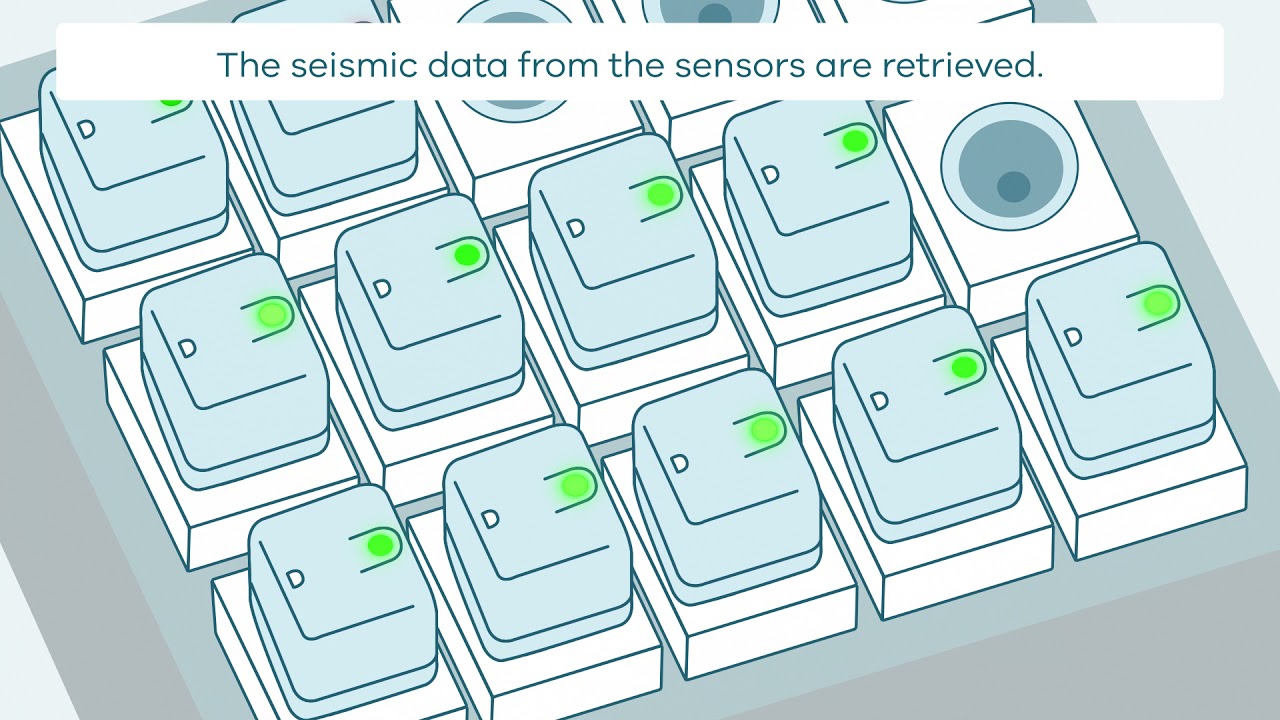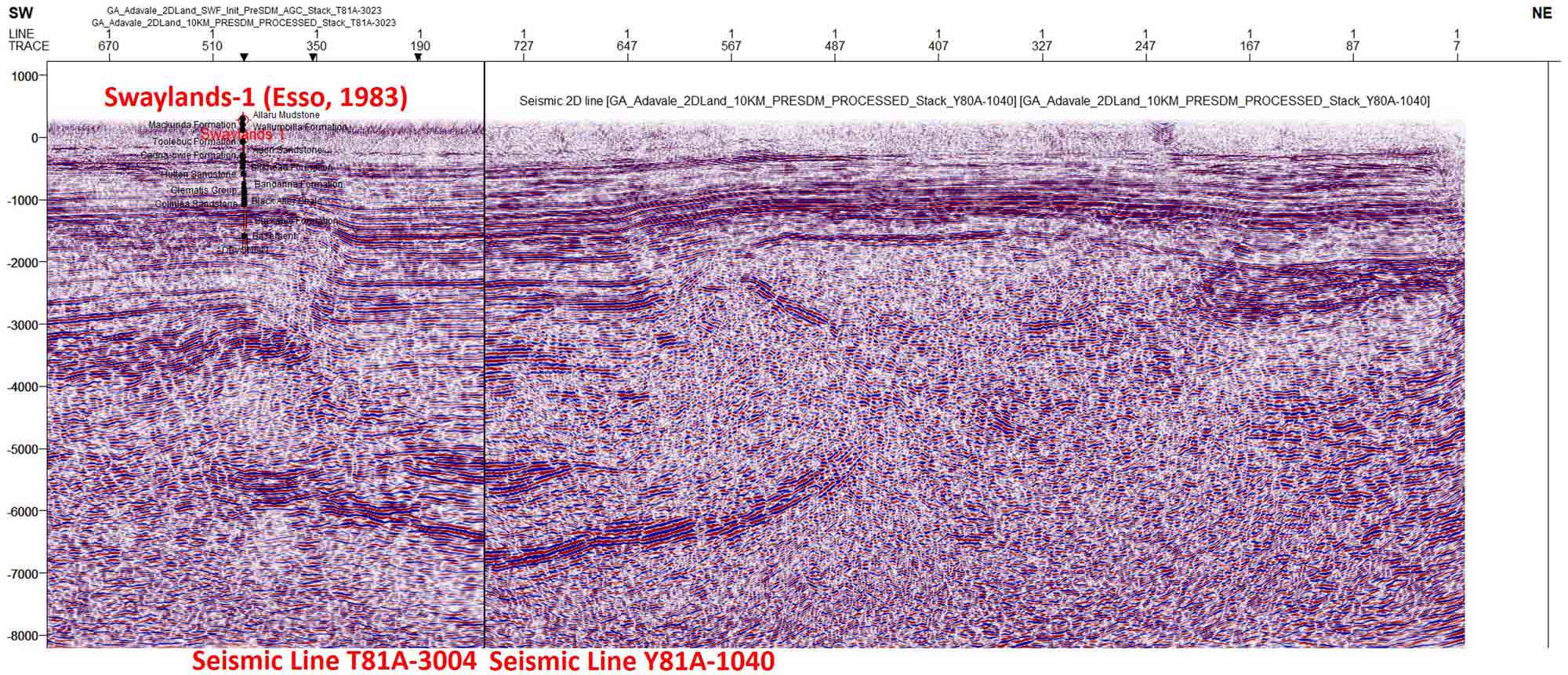Data Driven Discoveries Program – Adavale Basin
Page last updated:16 June 2025

The Data Driven Discoveries program is harnessing the power of historic and cutting-edge scientific data to accelerate discoveries in a key underexplored sedimentary basin and support Australia’s energy transition.
This $30.9 million program, led by Geoscience Australia in collaboration with the Geological Survey of Queensland, will re-examine decades old seismic data and collect new geoscientific data to identify opportunities for resource discovery in the Adavale Basin in south-central Queensland.
This program supports the Australian Government’s plans to achieve net zero emissions by 2050, through researching opportunities for hydrogen storage, groundwater and minerals within the Adavale Basin and surrounding area, providing companies and governments with vital information to help secure the region’s prosperity and our nation’s future.
Hydrogen storage
Hydrogen gas can be stored in very large quantities underground in human-created salt caverns. The Boree Salt deposit in the Adavale Basin is the only known thick salt accumulation in eastern Australia. However relatively little is known about its extent and size. The Data Driven Discoveries program will help to further identify the location and extent of salt bodies within the Adavale Basin and their geological controls.
Salt bodies are also a potential source of renewable geothermal energy. The thermal conductivity of salt makes it an excellent medium for storing and transmitting heat, which can be used for power generation. However, more investigation is needed to fully understand the extent and size of salt bodies in the Adavale Basin, as well as their geological controls, before their potential for renewable energy can be fully realised.
Minerals
The identification and development of critical mineral resources is increasingly important as demand for renewable energy technologies and electric vehicles continues to grow. Basin systems like the Adavale Basin can host a variety of critical minerals, including copper, zinc and cobalt, which are critical to produce wind turbines and electric vehicle batteries. The Data Driven Discoveries program’s deep crustal seismic data can help to identify potential areas of mineralisation and provide valuable information on the size, shape, and depth of mineral deposits.
Groundwater
Reprocessed and new seismic data can be used to help understand distribution of aquifers and aquitards in the subsurface. The Data Driven Discoveries program will sample deep groundwater resources for the first time to understand composition and connectivity of groundwater resources. This combined information can be used to better understand the hydrogeological properties of the area, such as groundwater flow and storage, and can aid in the management and sustainable use of groundwater resources.
Hydrocarbons
The Adavale Basin is a proven hydrocarbon basin, hosting the producing Gilmore Gas Field. However, the basin is still not well understood and remains underexplored. This makes it challenging to identify and develop additional hydrocarbon resources, both conventional and unconventional.
The new seismic data can provide valuable insights into the geological structures and properties of the Adavale Basin. Knowledge of geological structures can help to identify potential reservoirs and traps for hydrocarbon deposits and improve our understanding of the controls on hydrocarbon generation and trapping, for both conventional and unconventional resources. By using the new seismic data, geologists can better understand the subsurface geology of the Adavale Basin and identify areas of potential hydrocarbon accumulation. This can lead to the discovery of new hydrocarbon resources, which can support energy security and economic growth in Australia.
The Adavale Basin is a large and relatively old basin which was deposited in the Devonian period from approximately 419 to 358 million years ago. The Adavale Basin is buried under the younger Galilee Basin and does not out crop or appear at surface. This makes it challenging to study the basin's geology and understand its properties and potential resources. Reflection seismic data allows Geoscience Australia to image the basin and make predictions about its hidden geology. Drilling a stratigraphic well will allow Geoscience Australia to test these interpretations and models.
Seismic reflection data is one of the most valuable techniques to use in basins to infer the location of resources and provides a unique insight into basin architecture and basin evolution. Seismic reflection data involves generating sound waves that are sent into the subsurface and then recording the reflected waves that bounce back to the surface. By analysing these reflected waves, geologists can construct detailed images of the subsurface geology and identify salt bodies for hydrogen storage, potential hydrocarbon reservoirs, mineral deposits, and groundwater resources. Geoscience Australia is combining new and reprocessed legacy seismic to better understand the geology of the Adavale Basin. This can lead to more accurate interpretations of the subsurface geology and a better understanding of the potential resources in the basin.
Reprocessing of legacy or “old” seismic reflection data for new geological insights
Reprocessing seismic data involves taking legacy or vintage seismic data from surveys conducted in the past and applying recent technological advances to further reduce the noise in the data and improve imaging of the subsurface. The Data Driven Discoveries program has reprocessed approximately 2350 kilometres of seismic data from the Adavale Basin acquired between the 1960s and 1980s. Although not modern acquisition, the reprocessing provides a tangible uplift in data quality and improves our geological understanding and helps us to decide where to put the new modern seismic acquisition.
New modern seismic reflection acquisition to further improve geological knowledge
Geoscience Australia conducted a deep 2D crustal reflection seismic survey in south-central Queensland in 2023 to map potential mineral, energy, groundwater and hydrogen storage resources. Reflection seismic data is also used to map the geology and structure of the Earth. The data from this new survey will be used to learn more about how the Australian crust evolved throughout geological time.
A reflection seismic survey is carried out using Vibroseis trucks. The trucks are fitted with heavy vibrating plates that send seismic (sound) waves into the ground, which then bounce off underground rock layers in the Earth. The reflected signals are recorded back at the surface by small sensors called geophones, placed at regular intervals along the survey line. The reflection data from all the geophones is then extracted, processed and then combined to create an image of the Earth.
The use of Vibroseis trucks for seismic surveys has several advantages over other methods. Firstly, it is non-invasive and very similar to a medical ultrasound scan, and the seismic waves cause no damage to infrastructure or the environment. Secondly, it can cover large areas efficiently, making it suitable for regional studies, such as the Adavale Basin survey.
A reflection seismic survey involves 10 to 15 4WD vehicles, 3 to 4 Vibroseis trucks, and a large recording truck to retrieve and process the information from the geophones. The trucks travel slowly, on the edge of the road, and only need to traverse along the road once. The truck’s vibrations sound and feel like a road train passing by.
A seismic survey crew can include up to 40 people. Support vehicles travel separately and can include trucks, 10 to 15 caravans that make a mobile camp for the seismic crew, a water tanker, mobile water treatment plant and other equipment used at camp sites.
Once the raw reflection seismic data is acquired it is processed using a range of advanced algorithms and techniques to enhance the quality of the data, remove noise and other interference, and generate detailed images of the subsurface structures and features. These images provide valuable information about the composition, thickness, and orientation of the geological formations in the Adavale Basin. The processed seismic data is also used to generate interpretations and models of the subsurface. These models allow geologists to visualise the subsurface in greater detail and make more accurate predictions about the geology.
The publicly available seismic data will serve as a valuable resource for researchers and scientists who are interested in understanding the geological history and evolution of the basin. By studying the seismic data, they can gain insights into the tectonic processes that have shaped the basin over millions of years and the various geological events that have occurred within it.
Drilling to discover the hidden geology of a buried basin
Drilling is used to characterise and sample rocks that are hidden under cover of geologically younger sedimentary basins and weathered material at the surface. Drill core and rock chips collected from boreholes are used to describe and analyse the covered, hidden geology. Techniques include rock geochemistry, petrology, pore fluid chemistry, interpreting structures and measuring geological ages. Downhole geophysical data is also collected from the boreholes and are used to map rock types away from the borehole to improve geophysical models. The data acquired from boreholes can be used to assess mineral and groundwater potential.
A drilling site will be identified through the seismic surveys undertaken in 2023, and the seismic reprocessing and chemostratigraphy undertaken in 2022 and 2023. Drilling will be by either a rotary mud or diamond drilling method to recover rock chips or continuous drill core. The footprint of the ground disturbance for drilling operations will be a cleared pad of approximately 50 by 50 metres, and may require several mud sumps to be dug, each approximately 3 by 5 metres in size and up to 2 metres deep. Operations run 24 hours a day, 7 days a week, supported by a small portable camp and support equipment including 4WD vehicles and trucks.
Drilling will be carefully supervised and monitored to avoid disturbance to surface water and aquifers, and all sites will be rehabilitated after drilling according to best practice.
Chemostratigraphy to correlate geological units across the basin
In order to establish a correlation across the rock layers the Adavale Basin, chemostratigraphy using whole rock inorganic geochemistry was undertaken on core from existing wells. Previous attempts to correlate the Devonian-aged rock layers have been hindered by factors such as shallow drilling, structural complexities, and limited rocks of similar age and type to use as references on the surface in central Queensland. A new chemostratigraphic study has been undertaken to overcome these challenges and establish regional correlations across the basin to further understand the layered geology in the Adavale Basin. This technique will be used to interpret the new seismic data acquired in the program, and provide further information to identify a drilling site.

Learn how seismic surveys work.

Learn how stratigraphic drilling works.
Community and stakeholder engagement
Geoscience Australia staff and selected contractors will contact landholders, local government and other agencies throughout the program. Measures will be taken to mitigate against impacts to farm activities, the environment and cultural heritage.
Geoscience Australia staff and contractors comply with all Commonwealth and state government COVID-19 legislation, including public health orders and directions, to protect the health and wellbeing of the community.
Partners
Geological Survey of Queensland
Data and products
Palu, T. J., Szczepaniak, M., Hossain, M., Rasheed, H., Evenden, C. Bouma, M. 2025. Data Driven Discoveries: Adavale Basin Deep Crustal Seismic Survey (L215). Data release with initial geological insights. Record 2025/06. Geoscience Australia, Canberra. https://dx.doi.org/10.26186/150348
Ley-Cooper, A. Y. and Deo, R. N., 2025. AusAEM, Northeast Queensland, Australia, 2024 Airborne Electromagnetic Survey TEMPEST® airborne electromagnetic data and GALEI conductivity estimates. Geoscience Australia, Canberra. https://doi.org/10.26186/150185
Hossain, M., Costelloe, R., Rasheed, H., Szczepaniak, M. & Bouma, M., 2024. L215 Adavale Basin 2D Seismic Survey. Geoscience Australia, Canberra. https://dx.doi.org/10.26186/149289
Geoscience Australia, 2024. Blackall Airborne Gravity Gradiometry Survey, 2024. Canberra. https://dx.doi.org/10.26186/149789
Geoscience Australia, 2023. Adavale Basin 2D Reprocessed Seismic Data Package 2023. Geoscience Australia, Canberra. https://dx.doi.org/10.26186/149018
Riley, D., Pearce, T., Davidson, M., Sirantoine, E., Lewis, C. & Wainman, C., 2023a. Application of elemental chemostratigraphy to refine the stratigraphy of the Adavale Basin, Queensland. The APPEA Journal, 63, 207-219. https://doi.org/10.1071/AJ22108
Riley, D.A., Pearce, T.J., Davidson, M., Sirantoine, E., Wainman, C. & Lewis, C., 2023b. Defining a chemostratigraphic framework for the Adavale Basin - Inorganic and stable isotopic analysis of 10 petroleum wells from the Adavale Basin, Queensland. Geoscience Australia, Canberra. Record 2023/33. https://dx.doi.org/10.26186/147773
News
Data Driven Discoveries initiative to shed new light on resource potential
For further information
Geoscience Australia
Email: ClientServices@ga.gov.au
Phone: 1800 800 173

